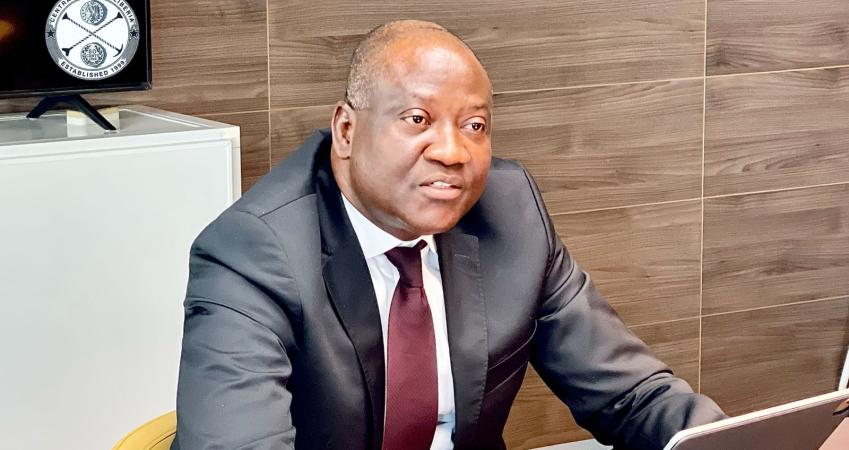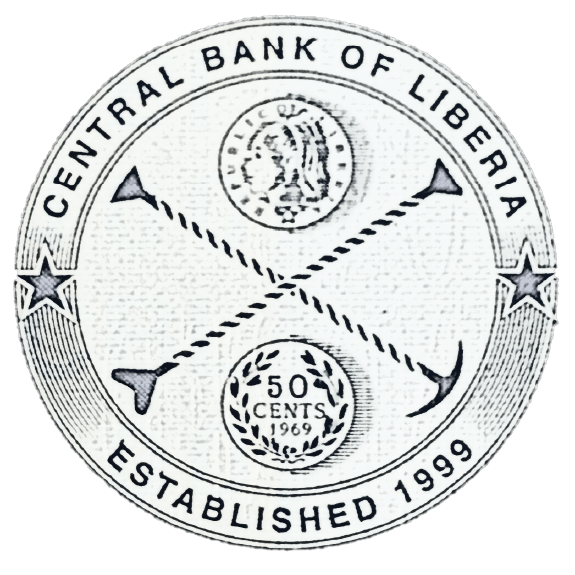
The Central Bank of Liberia’s (CBL) Monetary Policy Committee (MPC), after a thorough assessment of global and domestic economic developments, has decided to retain the Monetary Policy Rate (MPR) at 17.0 percent as well as the Liberian dollar and US dollar reserved requirement ratios of 25.0 percent and 10.0 percent, respectively. The MPC also decided to re-introduce the corridor system, offering standing credit facility (SCF) at the upper band of MPR plus 2.5 percentage points and standing deposit facility (SDF) at the lower band of MPR minus 7.5 percentage points.
A. Domestic Macroeconomic Developments
The MPC found that the Quarterly Real Gross Domestic Product (QRGDP) had moderated to 1.7% in the fourth quarter, from 5.3% in the first quarter of 2023, and that this trend was likely to continue for the next two months in the first quarter of 2025 as businesses move to replenish their stocks that were used up during the 2024 end-of-year festivities.
Of concern to the MPC was the rise in consumer prices to 8.7 percent, from 5.9 percent in the third quarter of 2024, and projected to further increase to 10.3 percent, +/-2.0 percent for the first quarter of 2025, largely attributable to a rise in domestic food prices.
In the banking sector, the MPC noted a decrease in total assets, total deposits, and total loans and advances by 3.4 percent, 3.3 percent, and 5.5 percent, respectively, mainly reflecting exchange rate appreciation. Non-performing loans, on the other hand, reduced by 2.1 percentage points to 19.2 percent, from 21.3 percent in the previous quarter, but it is still above the Bank’s tolerable limit of at most 10.0 percent.
The MPC observed the concentration of credits to five sectors, namely: trade (26.0 percent), personal (14.9 percent), services (14.2 percent), oil and gas (8.4 percent), and construction (8.1 percent), but noted a steady growth in credits to the private sector, with the Liberian dollar component increasing by 2.7 percent from L$5.9 billion to L$6.0 billion during the third quarter of 2024. This was mainly driven by an estimated 57.3 percent and 40.4 percent growth in credits to manufacturing and agriculture, respectively.
The MPC noted a decline of 1.4 percent in broad money in quarter four, compared to the previous quarter, and a 25.6 percent rise in currency in circulation from L$27.9 billion attributed to increased spending around the 2024 festive season. The MPC also noted an undersubscription of the CBL Bills, reflecting drawdown on deposits to facilitate the festive season spending.
Government’s fiscal operations resulted in a net injection of L$13.2 billion Liberian dollars during the fourth quarter in support of gradual de-dollarization and US$37.4 million during the last quarter of 2024. However, fiscal impulse contracted to 3.0 percent of GDP from 1.7 percent of GDP in the previous quarter. Overall, the MPC was optimistic that the government’s policy in the next quarter would significantly stimulate aggregate demand, potentially increasing the output gap and mitigating the risk of exchange rate and inflation uncertainties.
The MPC noted with concern the projected expansion in Liberia’s trade deficit from US$35.2 million in the third quarter of 2024 to US$67.1 million in the subsequent quarter on account of widening import payments that resulted to a reduction in gross international reserves equivalent to only 2.8 months of import cover, down from 3.1 months in the previous quarter.
The MPC was satisfied with exchange rate movements during quarter four, as the Liberian dollar strengthened, appreciating against the US dollar by 4.46 percent and 4.60 percent to L$184.64/US1.00 and L$185.93/US$1.00 on both end-period and period average basis, respectively, during the period under review, due mainly to an increase in remittances and CBL’s tight money policy stance as well as GoL US dollar net injection..
B. Global Macroeconomic Developments
The MPC noted that global economic growth moderated slightly from 3.3 percent in 2023 to an estimated 3.2 percent in 2024, after many regions resorted to tight monetary policies due to high inflation, resulting to a slowdown of global headline inflation from 6.7 percent in 2023 to 5.8 percent in 2024. Inflation in sub-Saharan Africa, however, rose to 18.1 percent in 2024 due to food price rises and other structural weakness in the agricultural sector.
The positive global economic outlook, the MPC noted, risked losing steam and leading to inflationary pressures should China’s economic growth slow down and the Russia-Ukraine and Isreal-Hamas wars escalate further.
Commodity price fluctuations were deemed by the MPC to be favorable for Liberia, emanating from reductions in the prices of rice and fuel, while export commodity prices such as those of gold, iron ore, rubber and palm oil rose.
In conclusion, the MPC assures the public that it will continue to monitor global and domestic economic developments and implement policies that enhance financial stability and foster economic growth of the Liberian economy.
